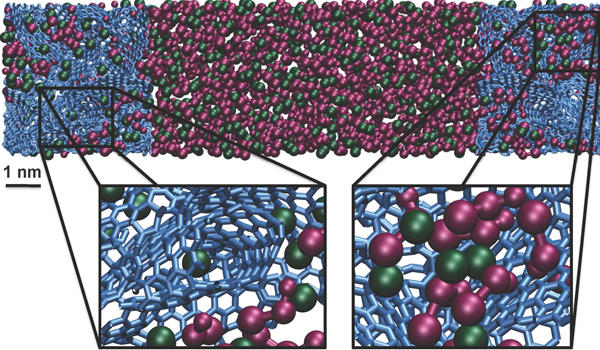 |
An international team of materials researchers including Drexel Univ.’s Yury Gogotsi has given the engineering world a better look at the inner functions of the electrodes of supercapacitors – the low-cost, lightweight energy storage devices used in many electronics, transportation and many other applications. In a piece published in Nature Materials, Gogotsi, and his collaborators from universities in France and England, take another step toward finding a solution to the world’s demand for sustainable energy sources
Gogotsi, a professor in Drexel’s College of Engineering and director of the A.J. Drexel Nanotechnology Institute, teamed with Mathieu Salanne, C?line Merlet and Benjamin Rotenberg from the Universit? Paris, Paul Madden from Oxford Univ. and Patrice Simon and Pierre-Louis Taberna of Universit? Paul Sabatier. What the group has produced is the first quantitative picture of the structure of ionic liquid absorbed inside disordered microporous carbon electrodes in supercapacitors. Supercapacitors have the capability of storing and delivering more power than batteries; moreover, they can last for up to a million of charge-discharge cycles. These characteristics are significant because of the intermittent nature of renewable energy production.

The figure above (Molecular Dynamics simulations by the group of Mathieu Salanne): shows ionic liquid surrounded by two porous carbon electrodes. It explains how the positive (red) and negative (green) ions interact with the carbon surface. The charging mechanism involves the exchange of ions between the bulk and the electrode. This simulation yields much higher capacitance values than in models using simplified regular electrode geometries. Image: Drexel Univ.
According to the researchers, the excellent performance of supercapacitors is due to ion adsorption in porous carbon electrodes. The molecular mechanism of ion behavior in pores smaller than one nanometer-one billionth of a meter- remains poorly understood. The mechanism proposed in this research opens the door for the design of materials with improved energy storage capabilities.
he authors suggest that in order to build higher-performance materials, researchers should know whether the increase in energy storage is due to only a large surface area or if the pore size and geometry also play a role. The results of this study provide guidance for development of better electrical energy storage devices that will ultimately enable wide utilization of renewable energy sources.
“This breakthrough in understanding of energy storage mechanisms became possible due to collaboration between research groups from four universities in three countries,” Gogotsi says. “Moreover, the team used carbon structure models developed by our colleagues Jeremy Palmer and Dr. Keith Gubbins from the North Carolina State Univ. This is a clear demonstration of the importance of collaboration between scientists working in different disciplines and even in different countries.”
This international collaboration is exemplified in the Master Program in Materials for Energy Storage and Conversion (MESC) offered jointly by Universities in France, Poland, Spain, China and the US (Drexel Univ.), in which students spent four semesters studying in at least three different countries and obtaining important international experience, in addition to knowledge in the energy field. Currently, 3 MESC students perform their master thesis research at Drexel.



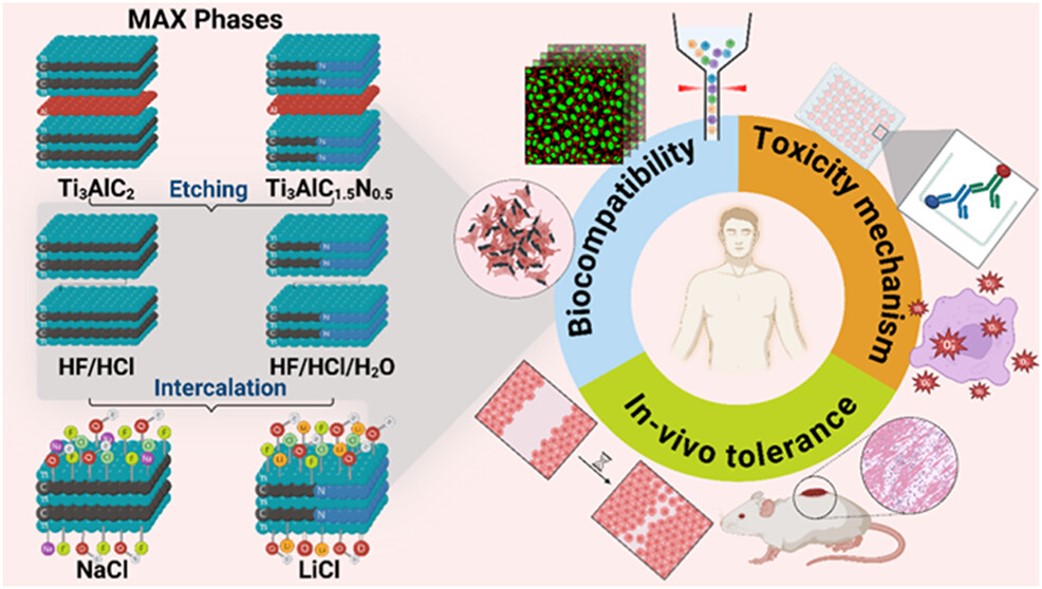 MXenes potential applications include sensors, wound healing materials, and drug delivery systems. A recent study explored how different synthesis methods affect the safety and performance of MXenes. By comparing etching conditions and intercalation strategies, researchers discovered that fine-tuning the surface chemistry of MXenes plays a crucial role in improving biocompatibility. These results provide practical guidelines for developing safer MXenes and bring the field one step closer to real biomedical applications.
MXenes potential applications include sensors, wound healing materials, and drug delivery systems. A recent study explored how different synthesis methods affect the safety and performance of MXenes. By comparing etching conditions and intercalation strategies, researchers discovered that fine-tuning the surface chemistry of MXenes plays a crucial role in improving biocompatibility. These results provide practical guidelines for developing safer MXenes and bring the field one step closer to real biomedical applications.
 Exellent news, our joint patent application with Drexel University on highly porous MAX phase precursor for MXene synthesis published. Congratulations and thanks to all team involved!
Exellent news, our joint patent application with Drexel University on highly porous MAX phase precursor for MXene synthesis published. Congratulations and thanks to all team involved! Last Call! Have you submitted your abstract for IEEE NAP-2025 yet? Join us at the International Symposium on "The MXene Frontier: Transformative Nanomaterials Shaping the Future" – the largest MXene-focused conference in Europe this year! Final Submission Deadline: May 15, 2025. Don’t miss this exclusive opportunity to showcase your research and engage with world leaders in the MXene field!
Last Call! Have you submitted your abstract for IEEE NAP-2025 yet? Join us at the International Symposium on "The MXene Frontier: Transformative Nanomaterials Shaping the Future" – the largest MXene-focused conference in Europe this year! Final Submission Deadline: May 15, 2025. Don’t miss this exclusive opportunity to showcase your research and engage with world leaders in the MXene field! We are excited to announce the publication of latest review article on MXenes in Healthcare. This comprehensive review explores the groundbreaking role of MXenes—an emerging class of 2D materials—in revolutionizing the fields of medical diagnostics and therapeutics. Read the full article here: https://doi.org/10.1039/D4NR04853A.
We are excited to announce the publication of latest review article on MXenes in Healthcare. This comprehensive review explores the groundbreaking role of MXenes—an emerging class of 2D materials—in revolutionizing the fields of medical diagnostics and therapeutics. Read the full article here: https://doi.org/10.1039/D4NR04853A.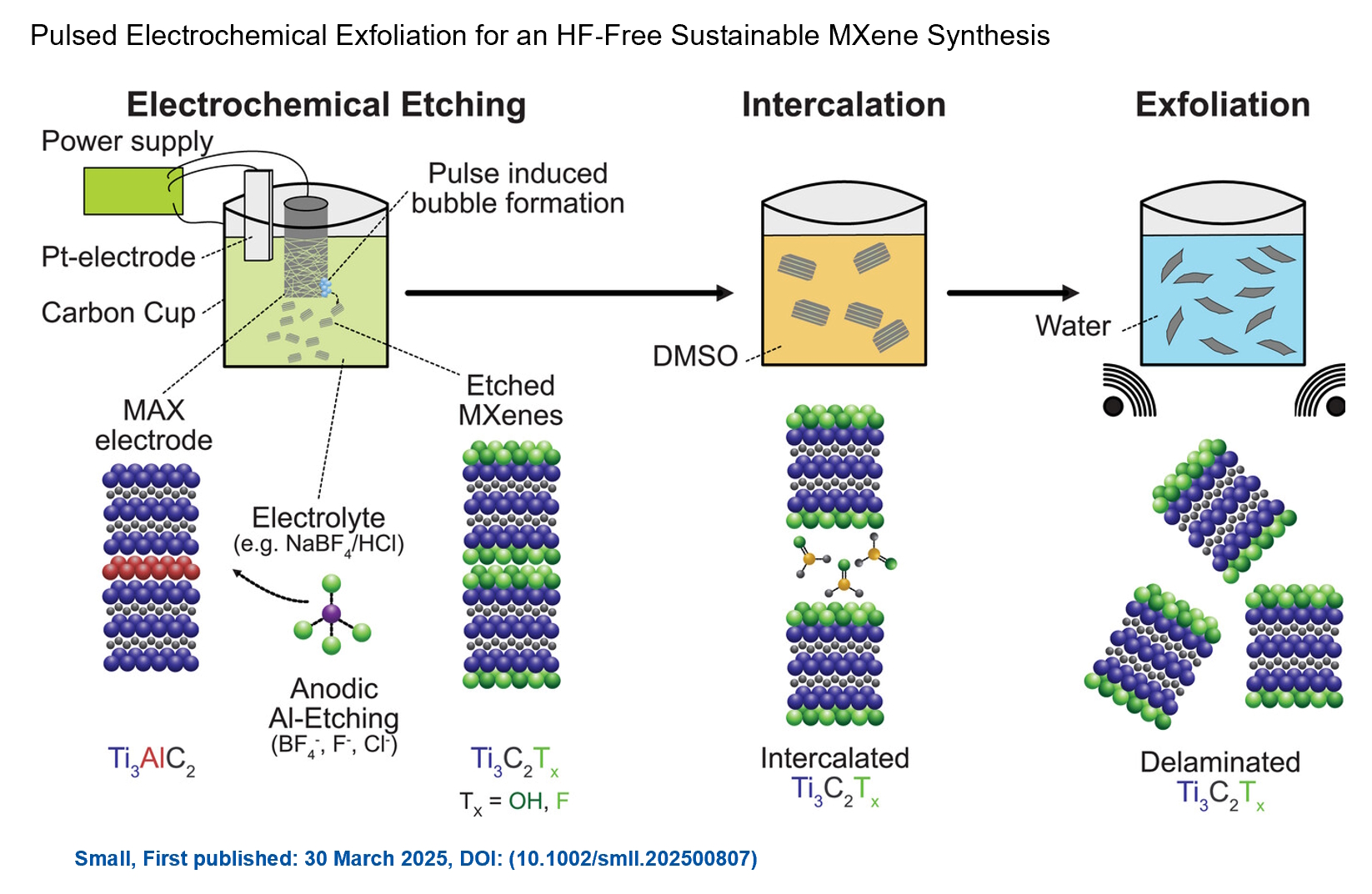 Congratulations and thank you to our collaborators from TU Wien and CEST for very interesting work and making it published! In this work, an upscalable electrochemical MXene synthesis is presented. Yields of up to 60% electrochemical MXene (EC-MXene) with no byproducts from a single exfoliation cycle are achieved.
Congratulations and thank you to our collaborators from TU Wien and CEST for very interesting work and making it published! In this work, an upscalable electrochemical MXene synthesis is presented. Yields of up to 60% electrochemical MXene (EC-MXene) with no byproducts from a single exfoliation cycle are achieved. Congratulations to all collaborators with this interesting joint work!
Congratulations to all collaborators with this interesting joint work!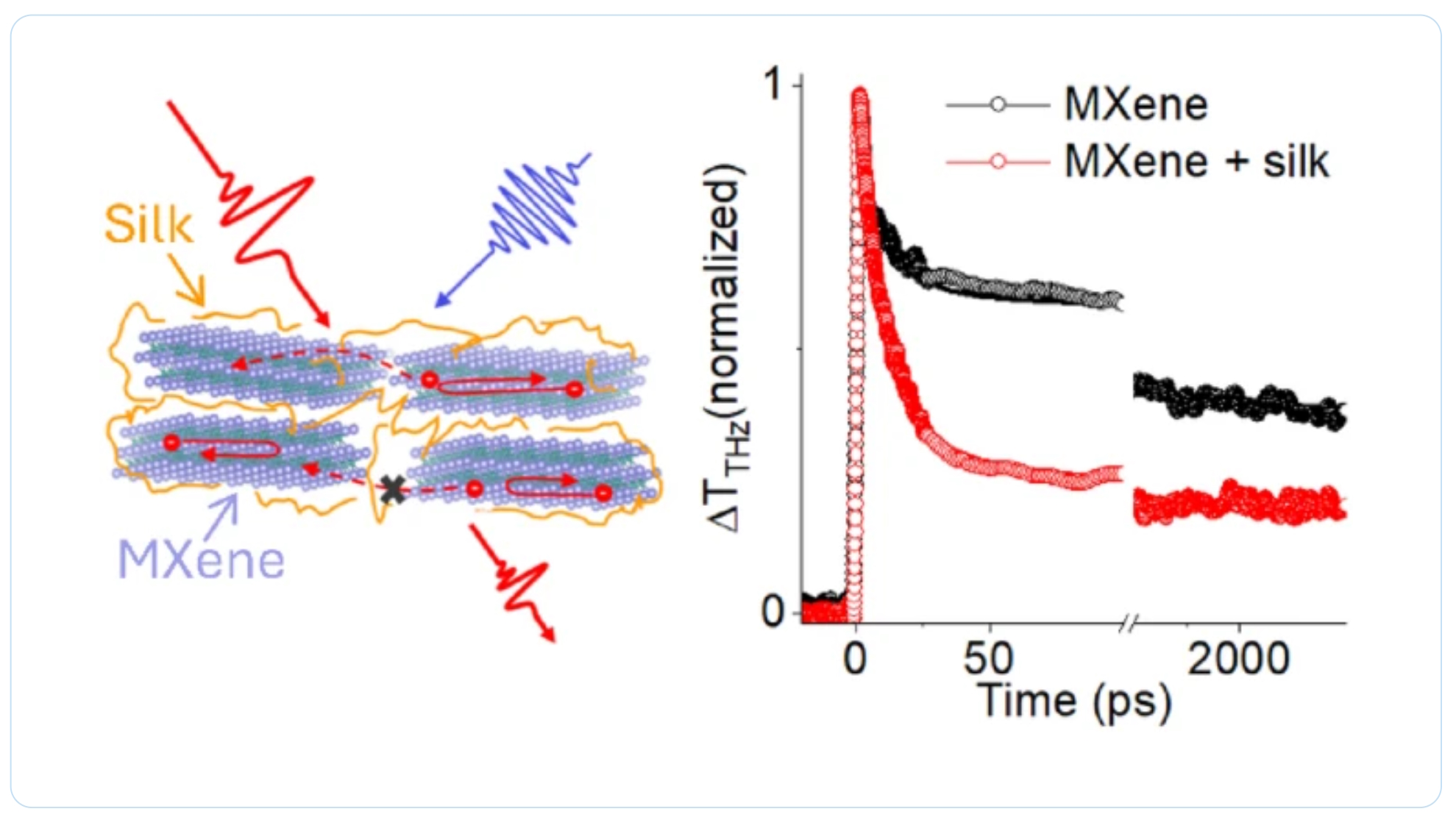 Thank you to our collaborators for the amazing joint work recently published in Graphene and 2D Nanomaterials about MXene–silk fibroin composite films aiming to develop materials with tunable electronic and thermal properties
Thank you to our collaborators for the amazing joint work recently published in Graphene and 2D Nanomaterials about MXene–silk fibroin composite films aiming to develop materials with tunable electronic and thermal properties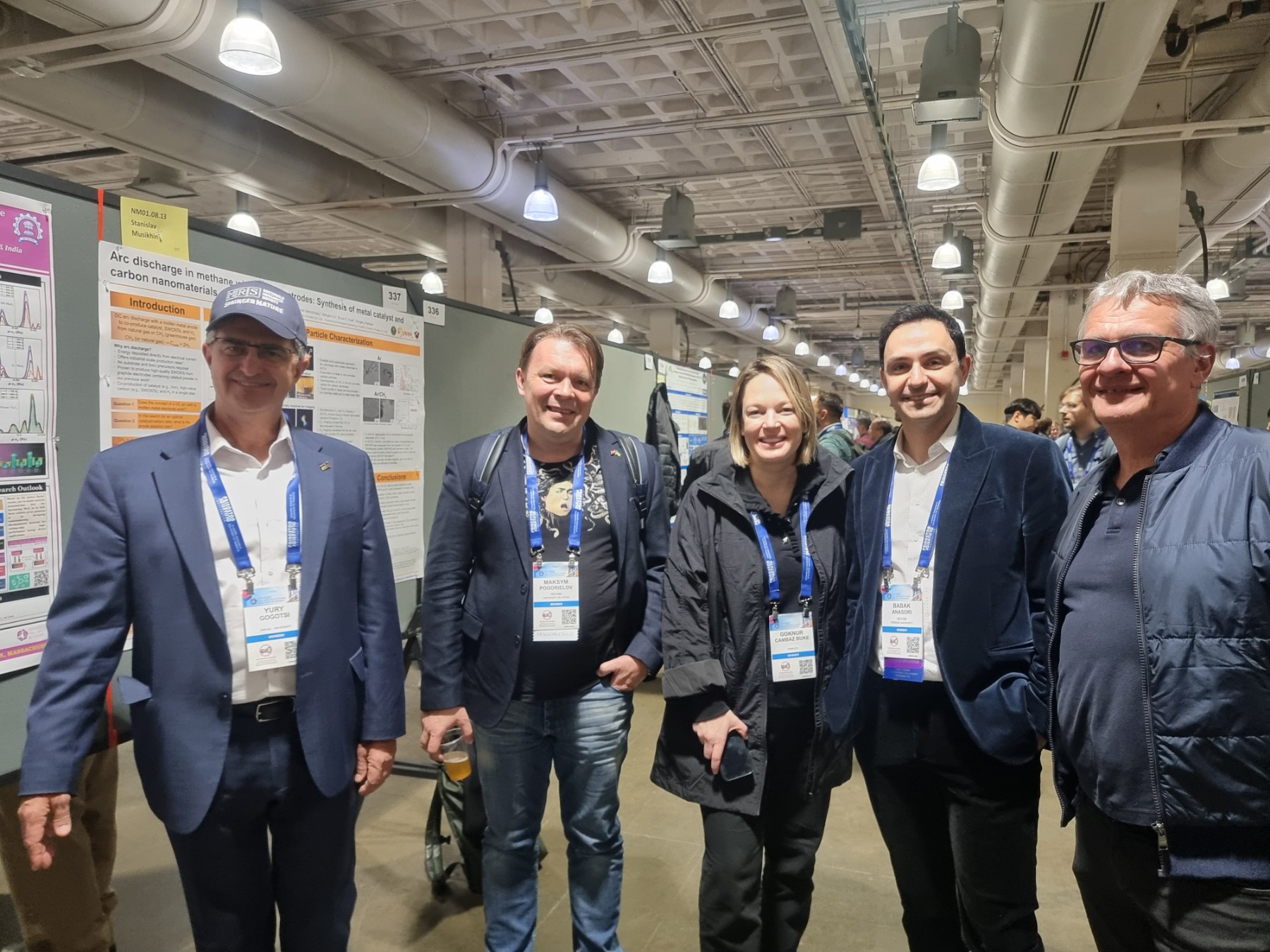 Dr. Oleksiy Gogotsi, director of MRC and Carbon-Ukraine, innovative companies that are among the leaders on the world MXene market, visited 2024 MRS Fall Meeting & Exhibit. together with Dr. Maksym Pogorielov, Head of Advanced Biomaterials and Biophysics Laboratory, University of Latvia.
Dr. Oleksiy Gogotsi, director of MRC and Carbon-Ukraine, innovative companies that are among the leaders on the world MXene market, visited 2024 MRS Fall Meeting & Exhibit. together with Dr. Maksym Pogorielov, Head of Advanced Biomaterials and Biophysics Laboratory, University of Latvia.
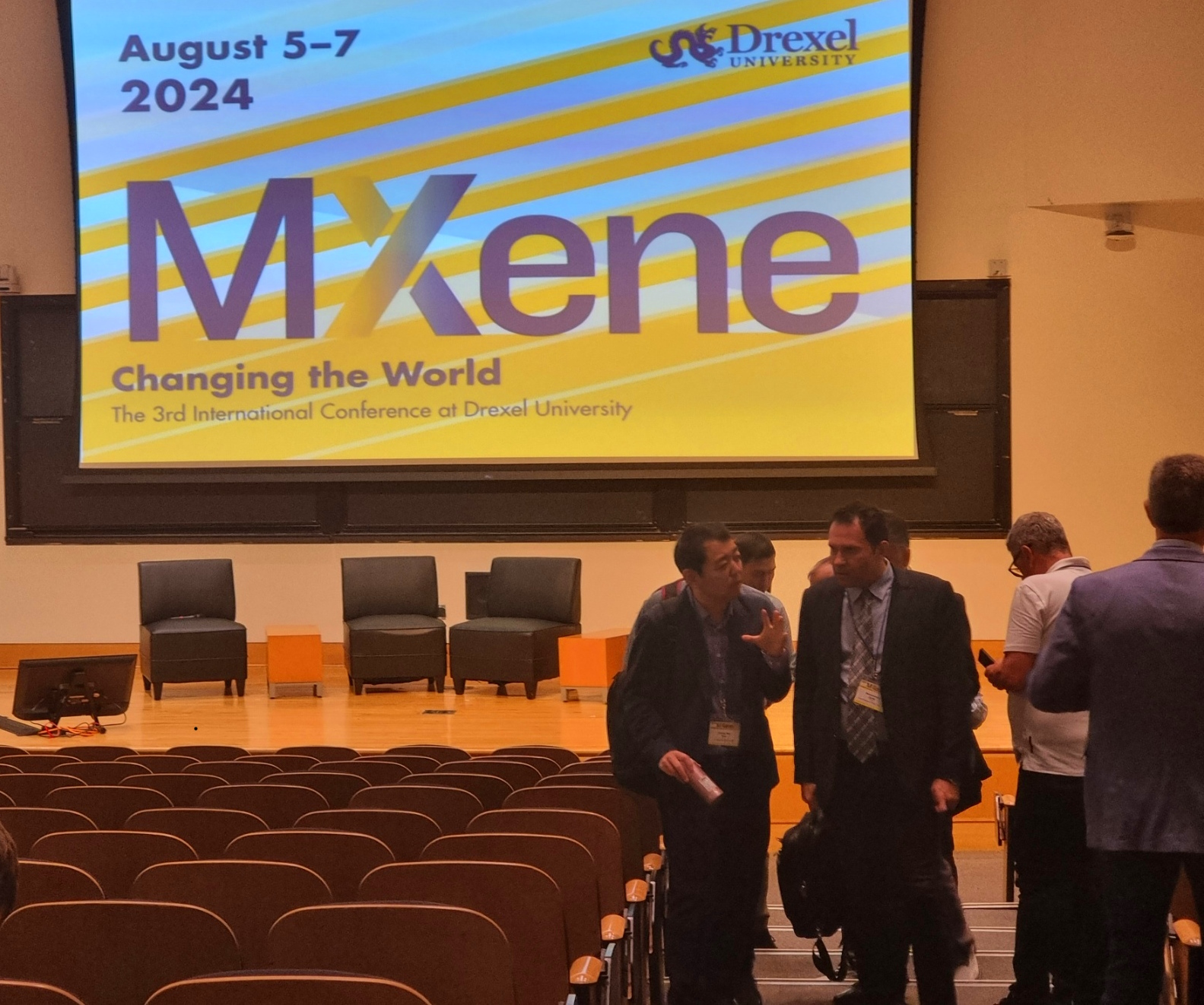 MRC and Carbon-Ukraine team visited the 3rd International MXene conference held at Drexel University on August 5-8, 2024. Conference brought together the best reserchers and leading experts on MXene field.
MRC and Carbon-Ukraine team visited the 3rd International MXene conference held at Drexel University on August 5-8, 2024. Conference brought together the best reserchers and leading experts on MXene field. 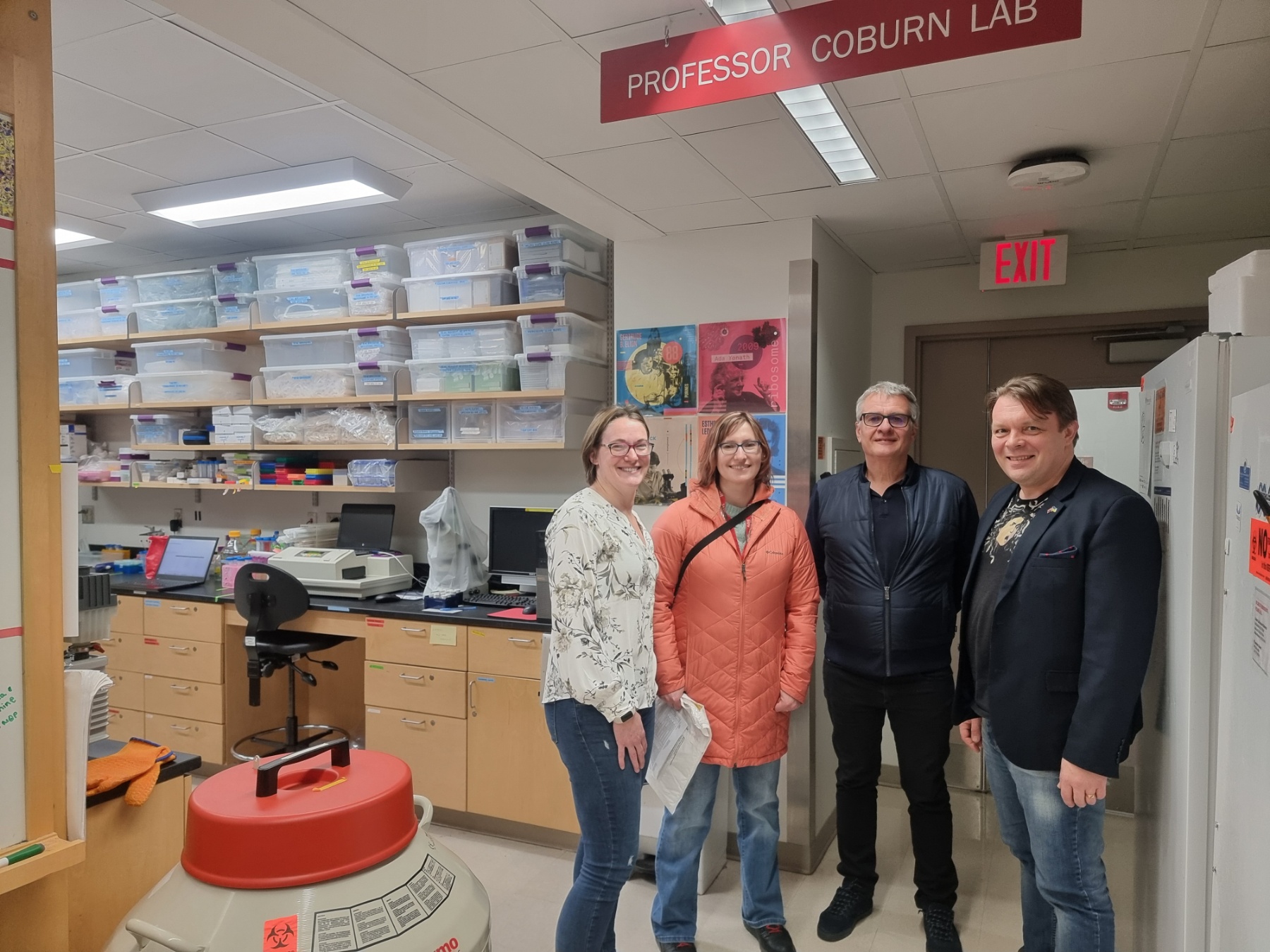
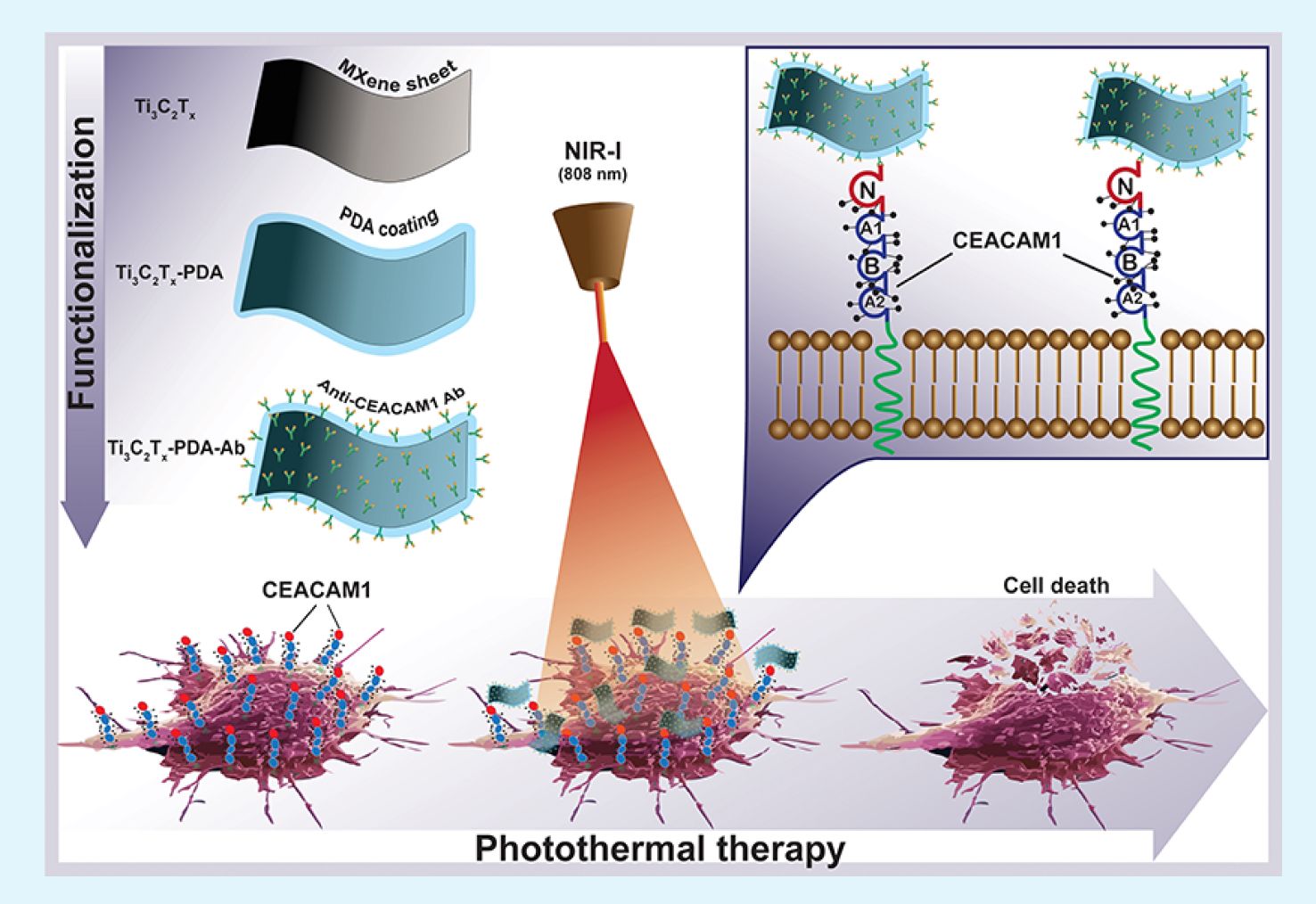 Together with colleagues from the University of Latvia, MRC/Carbone Ukraine, Adam Mickiewicz University, University Clinic Essen, and others, we have developed a novel concept involving the binding of antibodies to MXenes. In our research, we utilized anti-CEACAM1 antibodies to develop targeted photo-thermal therapy for melanoma (in vitro), paving the way for future in vivo studies and clinical trials. For the first time, we demonstrate the feasibility of delivering MXenes specifically targeted to melanoma cells, enabling the effective ablation of cancer cells under near-infrared (NIR) light. This new technique opens up vast potential for the application of MXenes in cancer treatment, diagnostics, drug delivery, and many other medical purposes.
Together with colleagues from the University of Latvia, MRC/Carbone Ukraine, Adam Mickiewicz University, University Clinic Essen, and others, we have developed a novel concept involving the binding of antibodies to MXenes. In our research, we utilized anti-CEACAM1 antibodies to develop targeted photo-thermal therapy for melanoma (in vitro), paving the way for future in vivo studies and clinical trials. For the first time, we demonstrate the feasibility of delivering MXenes specifically targeted to melanoma cells, enabling the effective ablation of cancer cells under near-infrared (NIR) light. This new technique opens up vast potential for the application of MXenes in cancer treatment, diagnostics, drug delivery, and many other medical purposes.
